#fairy tale opera
Text

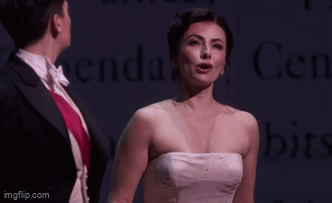
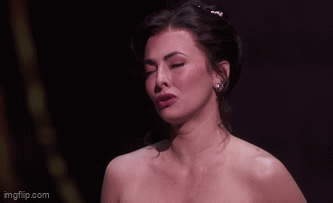



you are my charming prince.
and if I could choose, I would choose you.
Oh, how I wish I did not have to lose you
the very moment that we met...
#opera#opera tag#cinderella#cinderella opera#cendrillon#cendrillon opera#mezzos#mezzo-soprano#emily d'angelo#isabel leonard#divas#fairy tales#fairy tale opera#opera gifs#cendrillon gifs
26 notes
·
View notes
Text
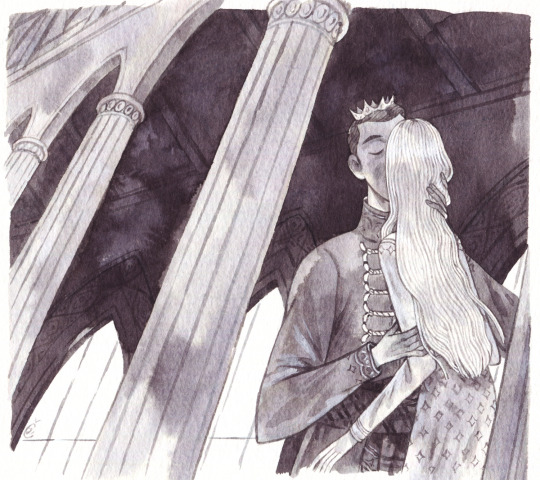
Něma-li ústa tvá, Bůh to ví,
vylíbám odpověď s nich!
If mute are your lips, I swear to God,
They will answer to my kiss!
One more Rusalka illustration. This one isn't for the calendar but I thought it would be a pity not to make a drawing for this part of the libretto 💖
588 notes
·
View notes
Text
Bartók wrote at the time of composition [of the opera Bluebeard's Castle]: 'Women should be accorded the same liberties as men. Women out to be free to do the same things as men, or men out not to be free to do things women aren't supposed to do - I used to believe this to be so for the sake of equality...' He does not go on to retract his opinion, but qualifies it as necessary because repressing women's desires constitutes a graver risk than allowing them equal expression.
The heroines of twentieth-century stories about marriage to a beast no longer reject him: they are shown welcoming the discoveries the union brings them. The opera dramatizes a ritual of an initiation which can never be fully achieved, and its ultimate import, unlike its predecessor's, stresses surrender: Judith meets the fate that the earlier heroines are spared, but she steps into the void fully aware of what she is doing.
Marina Warner, From the Beast to the Blonde: On Fairy Tales and Their Tellers
#be bold be bold but not too bold#fairy tales#criticism#marina warner#opera#bluebeard#demon lovers#save her with fear
76 notes
·
View notes
Text


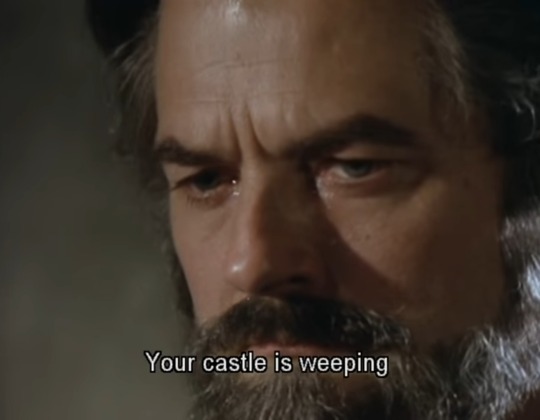
Duke Bluebeard's Castle (1988) dir. Leslie Megahey
480 notes
·
View notes
Text
A Fairy Tale Rabbit Hole

Snow White and the Seven Dwarfs is the movie that it started it all for Disney Animation and it's the most influential fairy tale movie ever. Its tropes and its tone still inspires fairy tale media to this day, either as parodies, or homages.
But what less people know is that Walt Disney was inspired to make this movie because of a peculiar silent movie that he watched when he was a teenager.
That movie was Snow White from 1916. Its writer, Winthrop Ames, adapted it from his own Broadway play. An example of American fairy tale theater.
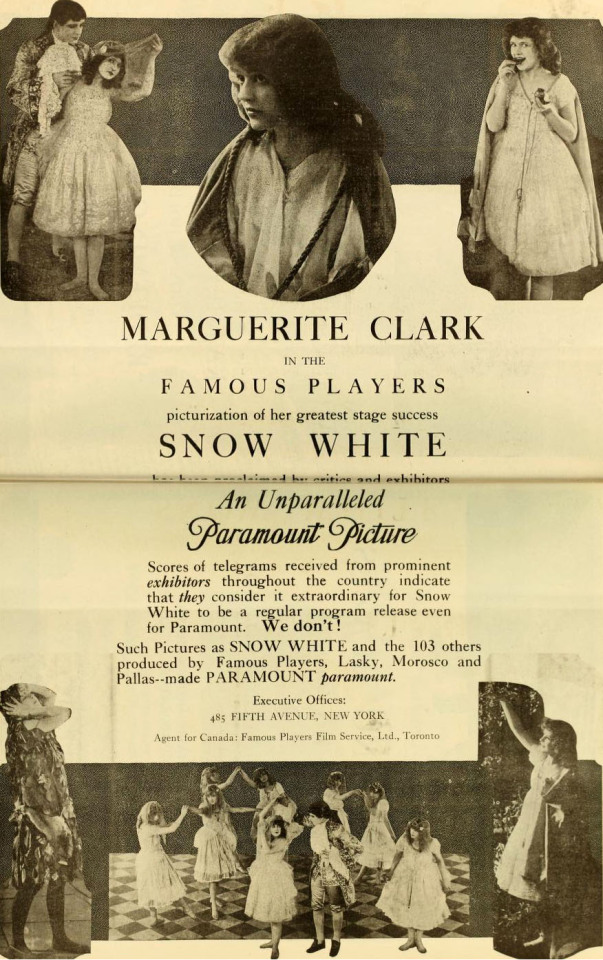
This kept me thinking.
The Wizard of Oz is one of the most iconic fantasy films of all time, and it was made in direct response to Snow White. What people don't know is that the scene where Glinda saves the gang from the deadly poppies with a snowstorm came straight from a fairy tale musical from 1902. It came from The Wizard of Oz, a fairy tale musical "extravaganza", with direct input from L. Frank Baum, only two years after the original novel.

Actually, stage musicals seem to take a slight part in the creation of Oz. The Marvellous Land of Oz, the sequel, seems to be inspired by this stage culture. General Jinjur and her army dresses like chorus girls, Ozma/Tip may be inspired by the crossdressing in children roles, and this was the book's dedication:
"To those excellent good fellows and comedians David C. Montgomery and Frank A. Stone whose clever personations of the Tin Woodman and the Scarecrow have delighted thousands of children throughout the land, this book is gratefully dedicated by THE AUTHOR"
These were actors of the 1902 stage show.
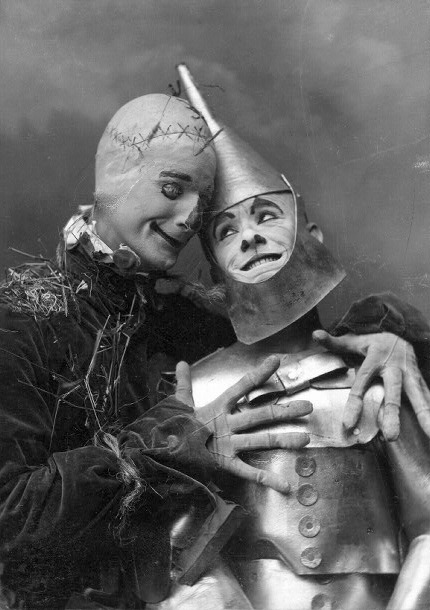
Two years later, on 1904 Peter and Wendy premiered. This play is also one of the most famous children stories ever. Walt Disney himself acted as Peter in a local production of it and Tinkerbell quickly became a mascot for the studio.
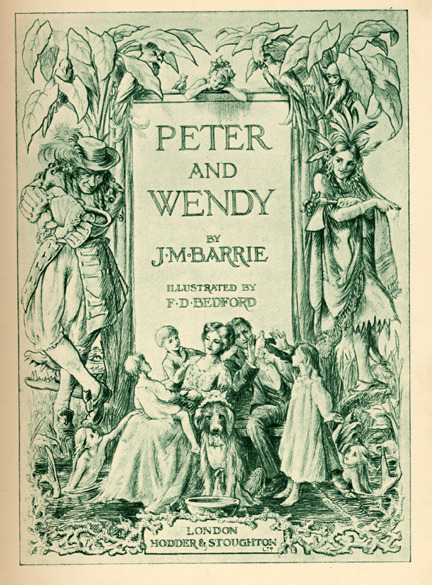
This all led me to think more about fairy tale theater specifically.
Since the ending of the 18th century and through the 19th century, a genre of stage show developed through Europe. It was mostly comedic and light-hearted, mainly inspired by fairy tales, and it was geared towards children and families. It involved lavish fantasy spectacles told through operas, ballets, and what we today would call "musical theater".
It had many different names and variations depending on the country.
On England, it evolved through the pantomimes and it became a Christmas tradition.
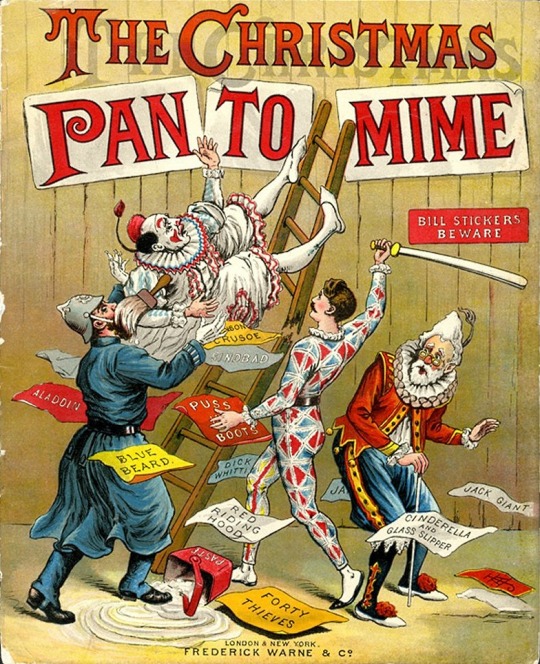
In Russian, it was mainly through ballet, called the ballet-féerie, often considered a lower-class, more commercialized entertainment than traditional ballet. Tchaikovsky's Sleeping Beauty and The Nutcracker are among some of them. Sleeping Beauty would later inspire Disney's telling of the story.
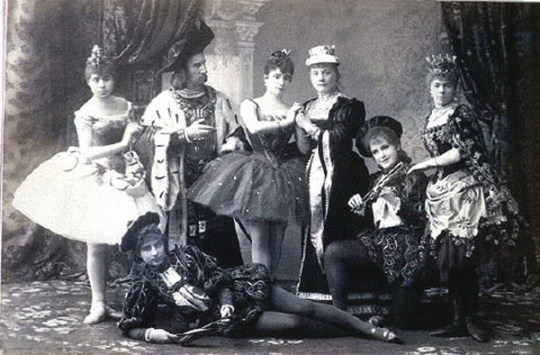
In France they were called Féerie, and it was a mix of music, dancing, pantomime, acrobatics, and stage effects. It influenced the development of burlesque, musical comedy and film.

From Wikipedia:
With his 1899 film version of Cinderella, Georges Méliès brought the féerie into the newly developing world of motion pictures. The féerie quickly became one of film's most popular and lavishly mounted genres in the early years of the twentieth century, with such pioneers as Edwin S. Porter, Cecil Hepworth, Ferdinand Zecca, and Albert Capellani contributing fairy-tale adaptations in the féerie style or filming versions of popular stage féeries like Le Pied de mouton, Les Sept Châteaux du diable, and La Biche au bois. The leader in the genre, however, remained Méliès,[37] who designed many of his major films as féeries and whose work as a whole is intensely suffused with the genre's influence.[38]
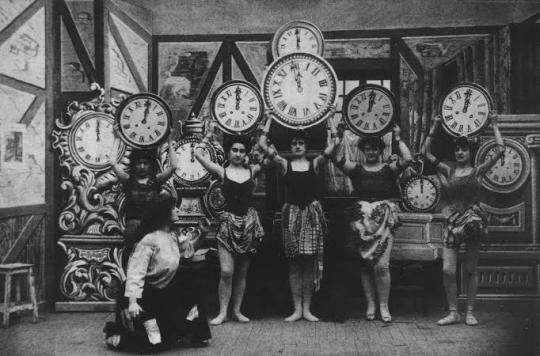
Once you realize a huge chunk of fairy tale media has roots in family friendly stage shows from 19th century, a lot of it started making sense.
The focus on romance, the focus on damsels in distress, prevalence of lighter tones, the everlasting connection to music and dance.
They may be the main reason why some fairy tales are more famous than others. Some became source material for a continuous stream of operas, operettas, musical extravaganzas, ballets, plays, and others simply not.
And besides the Victorian Era storybooks that bowdlerized fairy tales for children, I think this whole genre of the theater was responsible to firmly establish fairy tales as a child friendly media, decades before Disney ever released Snow White to cash in that nostalgia.

If you have something to add or if I just got something wrong, feel free to correct me.
@ariel-seagull-wings @princesssarisa @adarkrainbow @the-blue-fairie @theancientvaleofsoulmaking @natache @tamisdava2 @thealmightyemprex
53 notes
·
View notes
Text
Non-English "Cinderella" adaptations that might have influenced Disney's 2015 live action remake
Rossini's La Cenerentola (Italian opera, 1817). In the opera, the king has died, and the prince's search for a bride is motivated by his pending coronation. (The 2010 German Märchenperlen version also makes this choice.) In the 2015 film, the king is mortally ill, and later dies after the ball. Thus the opera's Cinderella and her 2015 counterpart both ascend straight to the throne in the end. Also, the opera's "fairy godfather" Alidoro disguises himself as a beggar and rewards Cinderella for treating him kindly, just as the 2015 Fairy Godmother does. (Although the Fairy Godmother also does this in Prokofiev's famous ballet.) The opera's Prince Ramiro also has a constant male companion, his valet Dandini, much like 2015's Kit has the Captain of the Guard (although many versions of Cinderella's prince have similar companions). Last but not least, both princes disguise themselves as a servant at some point: Ramiro switches clothes with Dandini for the ball to observe the true characters of the ladies, while Kit disguises himself as a guard to secretly observe the slipper-fitting.
Three Nuts (or Three Wishes) for Cinderella (Czech/German, 1973). In both this version and the 2015 film, Cinderella steals a few moments of freedom by riding her horse into the forest, and there she meets the prince on a hunt and stops him from shooting a deer. (Although in the 1973 film she throws a snowball at him, he chases her, and they taunt each other, while in the 2015 version they share a philosophical discussion about kindness and tell each other a little about their lives.) Both of these versions also hark back to the Grimms' tale early on, with Cinderella's father figure (the manservant Vincek in 1973, her actual father in 2015) going on a journey, and Cinderella asking for the first branch that hits his nose (1973) or brushes his shoulder (2015) as a gift. (In 1973 the branch contains the three magic hazelnuts that take the place of the Fairy Godmother in this version, while in 2015 it doesn't serve the plot, but is poignantly brought to her by the messenger who breaks the news of her father's death.)
Sechs auf einen Strech ("Six at one Blow"): Aschenputtel ("Cinderella") (German, 2011). Cinderella repeats a mantra that she learned from her mother: "You must never lose courage." In the 2015 film, she has a similar mantra, also from her mother: "Have courage and be kind." She also first meets the prince while he's hunting in the woods in this version, and the end sees them about to become king and queen, though in this case the old king is still alive, he just chooses to retire.
Zolushka (Russian, 1947). Cinderella has blonde hair, which she wears in fluffy shoulder-length curls at the ball, while the prince has wavy chestnut brown hair. (These could be coincidences, though.) The Fairy Godmother first appears as a humbly dressed old woman (although not as a beggar in 1947), then reveals her true, magical and glamorous form. The prince is also portrayed with boyish vulnerability as well as with courtly charm, and he even cries in one scene. (The '47 prince in the woods when he thinks he's lost Cinderella forever, 2015's Kit at his father's deathbed.)
When I posted my review of the 2015 film, @ariel-seagull-wings noticed the parallels with the 1947 Russian version. She suggested that Kenneth Branagh might have been influenced by that version, since British viewers are more likely than Americans to see the adaptations from continental Europe. The more I think about it, the more I realize that Branagh and the 2015 screenwriter Chris Weitz might have been influenced by more than one European Cinderella.
#cinderella#fairy tale#adaptations#parallels#2015#cinderella 2015#disney#zolushka#1947#tri orisky pro popelku#three wishes for cinderella#1973#opera#la cenerentola#1817#sechs auf einen streich#2011
72 notes
·
View notes
Photo

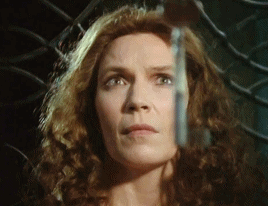




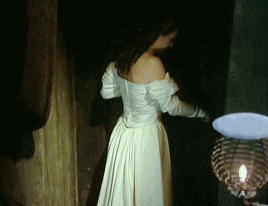

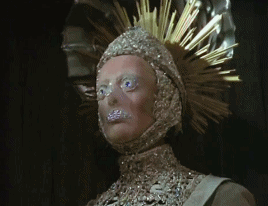

Duke Bluebeard’s Castle (1988)
453 notes
·
View notes
Text
Not okay
But who is here? I feel like I need time to properly over analyze everything, but also fear I'm gonna be up all night. (ah, the joys of fandom!)
Hang in there everyone!
#this is when I start getting 'once upon a time' flashbacks..#you want trauma - that damn disney crack fairy tale soap opera had me crying at work#ah..fandoms
15 notes
·
View notes
Note
Do you think the original Phantom of the Opera book has any sort of fairytale-like elements to it? If so, could you list some?
This ask is seven billion years old, but yes!
For one thing, the Phantom story is essentially a more specific version of the old Beauty and the Beast fairy tale - in both, a father "gives" his daughter to a terrifying monster who appears to be dangerous but turns out to love her, and she must find a way to love that monster in turn in order to keep herself safe and search for a happy ending. The Phantom story adds embellished elements, such as the heavy focus on music and the Phantom being a disfigured human instead of a cursed one, but the story is essentially the same, which means it carries over a lot of beats from the original fairy tale.
If you didn't know I'm a sucker for Aarne-Thompson-Uther, you do now, so let's go down a quick list of some of the fairy tale elements we see!
The Child Who Won't Leave Home: Lots of fairy/folktales have this element, where a child needs to leave home and make their way in the world or they will never truly grow up (which usually, in these stories, means they won't be able to be happy and/or they'll be a burden on their aging parents/community). Christine fits this trope, remaining somewhat locked in eternal childhood, focused on her memories of her father and his tales of the Angel of Music, until she is finally forced to see reality and make choices about her adult life.
The Girl as the Monster's Wife: This is a common fairy tale/folklore stock element: a beautiful young girl is given to a monster to become its bride. You see echoes of it in dragon/monster sacrifice tales, too, but the story usually uses its fairy tale themes to address real-life anxieties about women in earlier centuries having little to no control over who they married or how they were treated when they did. (And parents' fear over that for their daughters!)
The Animal Bridegroom: A subset of the Monster's Wife above, there are an absolute load of stories about young women being forced, either through trickery, blackmail, or magic, into marrying actual animals. Often, these animals can later be turned into humans through the power of her love and/or loyalty and devotion, but sometimes the moral is more about making the best of a weird situation. Obviously, the Phantom story inherits this from its Beauty and the Beast roots, even though the Phantom is no longer a literal animal.
The Dangerous Husband: The most common version of this is probably the tale of Bluebeard, but it appears in many stories and cultures (from the same anxieties as above!). In these stories, the husband is hiding a dark secret, and his innocent wife must realize he's evil and get out before it's too late or join others he has previously preyed on; in the Phantom story, Christine must realize that her "angel of music" is actually the murderous Phantom, and is in a constant state of discovering things like torture chambers and death threats until she and Raoul finally resolve the situation and escape.
Disenchantment by Kiss: In many fairy tales, the curse/transformation/evil is broken or defeated by a pure kiss from a loved one; in the Phantom story, it is Christine's kiss on his forehead (or mouth in later derivative versions) that causes him to realize that he has been behaving like a monster and end his reign of terror.
In addition to all this, there's also of course the mythology angle, which I mention a lot in reviews! Greek mythology is especially good with this - the Phantom story has heavy overtones of both the myth of Hades and Persephone, in which the god of the dead rises up from the underground to kidnap the beautiful young goddess of spring and everyone goes absolutely bonkers trying to get her back, and the myth of Eros and Psyche, in which the beautiful Psyche is forbidden from seeing her lover, who always comes to her in darkness with his face hidden, and when she breaks her promise and brings in a light to see him destroys the relationship and suffers as a result. The first has obvious parallels to Erik's kidnapping of Christine, while the second is a pretty clear comparison to the unmasking scene.
#phantom of the opera#mythology#fairy tales#anne pretends to be a real librarian#did you guys know they'll just let you learn about this stuff? for free?
108 notes
·
View notes
Text
Dvořák: Rusalka: Měsíčku na nebi hlubokém (Song to the Moon).
Růžena Maturová, soprano.
Recorded in 1907.
On Sunday, March 31th, 1901, at the National Theatre the world premiere of Dvorak's Rusalka was introduced. The title role was entrusted to Růžena Maturová (1869-1938).
#classical music#opera#music history#bel canto#composer#classical composer#aria#classical studies#maestro#chest voice#Rusalka#lyric fairy tale#Antonín Dvořák#water sprite#Slavic mythology#Song to the Moon#Měsíčku na nebi hlubokém#fairy tales#Růžena Maturová#soprano#classical musician#classical musicians#classical history#opera history#history of music#historian of music#musician#musicians#diva#prima donna
5 notes
·
View notes
Text
love story by taylor swift with peter and jason and jason is juliet and peter is romeo (because peter is the one actively trying to work through the problems in their relationship whereas jason takes a more passive stance)
#okay but it's really interesting if you think about it#because peter is the one making romantic poetic fairy tale metaphors and shit#while jason is reminding peter of harsh reality & telling him he needs to snap out of it#but peter is like. more aware of the status of their relationship y'know?? he's being pretty reasonable#jason on the other hand is completely overcome by fear and just sorta. trapped there.#idk my english is not english-ing atm but i have thoughts#anyway. 'romeo take me somewhere we can be alone / i'll be waiting all there's left to do is run'#'romeo save me they're tryna tell me how to feel / this love is difficult but it's real / don't be afraid we'll make it out of this mess'#< it's themmm.........#bare: a pop opera
14 notes
·
View notes
Text

“The girl’s village was at the edge of a dark wood where a beast killed anyone who crossed its path. Over a weary age of a thousand years, soldiers and kings alike had tried and failed to slay it, but all who plunged between those accursed trees perished in the pursuit. Without hesitation she walked into those woods and sang for the beast, but he did not fall asleep. He bowed his great horned head and turned back into the prince he had been, so long ago now that he couldn’t remember his name. Strong and shining he stood before her, and the beast was vanquished once and forevermore.
I wished I had a power like that.”
from NOCTURNE by Alyssa Wees 🖤
#nocturne#fantasy books#books#books and reading#gothic#gothic literature#ballet#fairy tales#beauty and the beast#death and the maiden#phantom of the opera#aesthetic#book aesthetic#bookish#book recs#bookworm#alyssa wees#my post#fairy tale#words
15 notes
·
View notes
Text
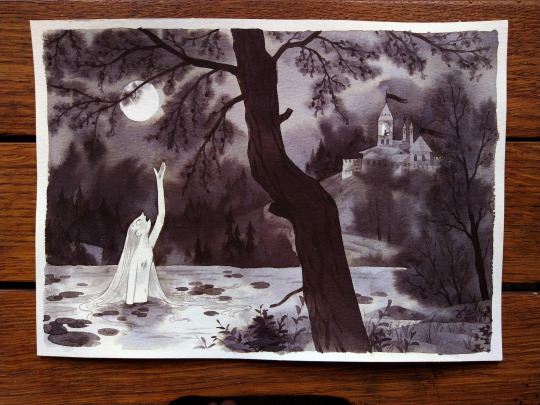
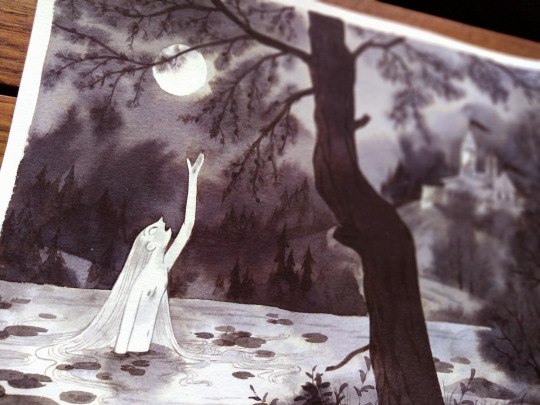
And at last Song to the Moon or "Měsíčku na nebi hlubokém" (O, Moon High up in the Deep, Deep Sky)
Also, preorders are now OPEN ✨ And I'm sorry to say that before I forgot to ask for your contacts because my brain apparently wasn't working properly when I made the form. So, I'd like to beg everyone who filled out the form already but didn't write any contact there to do so (of course, if you already bought a calendar from us in the past and I probably have your contact then you don't have to). Sorry guys and thank you so much!
This year it'll be a little wall calendar (with turning pages, not just a poster as in the few last years). A4 sized when opened. Printed in black&white on beige eco-friendly paper. The cost (shipping included) is 25USD.
Cena kalendáře v rámci ČR je 400kč s poštovným v ceně.
#my art#illustration#ink#traditional art#inktober#rusalka#song to the moon#opera#antonin dvorak#fairy tale#calendar#calendar 2024
590 notes
·
View notes
Text


I came upon this fabulous art series that tells the tale of Blue Beard and it inspired me to sit and think a little about the Blue Beard reference in Phantom of the Opera.
What do we think Erik means by name dropping the wife-murdering Blue Beard? His warning to Christine, to remember that terrible story, is made in anger. It’s really more of a threat than a warning, isn’t it? Raoul and Daroga are on the other side of the wall, in the torture chamber. Christine has stolen the keys that could free them. Erik is as unhinged here as we have ever seen him before.
Does he reference this old story because of Christine’s curiosity - because it is fundamentally a story about female curiosity? Or is it the element of marriage? Or murder? Is he simply being terrible - or is it foreshadowing? Erik has already connected love and death several times - remember his threat to make his coffin-bed larger, for the two of them, for their final days? That remark was also made in anger. Is Erik threatening to kill Christine? Or is he only trying to frighten her? Blue Beard was married several times. Is Erik perhaps telling Christine there were other women before her? If so, what became of them?
What did Leroux intend for us to feel, seeing that name - Blue Beard - come out of Erik’s mouth?

Blue Beard by Walter Crane
#blue beard#phantom of the opera#gaston leroux#le fantôme de l'opéra#french fairy tales#french folklore
92 notes
·
View notes
Text
On one hand I want to show my unhinged multiverse caterella flow chart(???) just bc it’s like. FUNNY to me how tangled and excessive and so very messy it is,,, but on the other hand I am Way to embarrassed to show how much I’ve obsessed over the branching concepts jdnffngjgn I don’t want people to Read It. maybe I’ll censor everything LOL you can fill in the blanks yourself 🕺
#I’ve already shown like 2 of the concepts when I posted cater/Jade and cater/my twst ocs#But. There’s just. A lot 🙈#I mean *I* like it. I think it’s fun LOL I shared it with my friend on discord when I did it a year ago#But it’s ssoooooooo self indulgent#Just me at my peak ‘Heehee putting my faves in soap opera / fairy tale scenarios for funsies and drama :3’#But I’m not very original about it LOL#MAN. 🧍 it’s scary enough posting the stuff I DO post#<- probably sounds like a lie with how many tiny guy doodles I make u all perceive LOL#just know any time I Post Images or Fic I am screaming and sweating the entire time#Emotionally but sometimes also physically LOL I get. Nervous .#Anyway it’s ok plenty of things I draw are just For Me and don’t leave krita and/or discord dms lol#But. But uhhh. Ok I forgot what my point was bye 🚶
5 notes
·
View notes
Text
have a new character who plays the harp so I looked up just “harp cover” because idk I just want to start thinking about how it would look/sound, but anyway now I’ve come to the conclusion that Fireflies should never be played on anything but the harp.
#rose and rambles#prosie's writing adventures#i decided this like one measure into the video#obvs my goal is to find songs that fit the characters and ya know what maybe fireflies does but eh im still perusing#fun fact! in the fairy tale by Gabrielle-Suzanne Barbot de Villeneuve#Beauty is very skilled with instruments and singing and performs for her family to lift their spirits#hence the harp thing#but also i thought it was so interesting how the fairy tale *does* mention that she likes reading and the beast's library#but it's only in passing and its more of a 'oh that could be a way to pass the time'#UNTIL SHE FINDS THE MAGIC MIRROR#and then she uses it to watch operas and plays and stuff from afar and/or the servants in the castle put on performances for her#I do think the disney version did so much more for developing the beast's character and from a writing perspective#the fact that his curse is so closely tied to his own character arc is much tighter writing#but it's also interesting how disney has truly impacted all subsequent retellings of beauty and the beast#to the point that the beast's arrogance and belle's love of books has become synonymous with the fairy tale#okay end of ramble and back to harp covers
3 notes
·
View notes